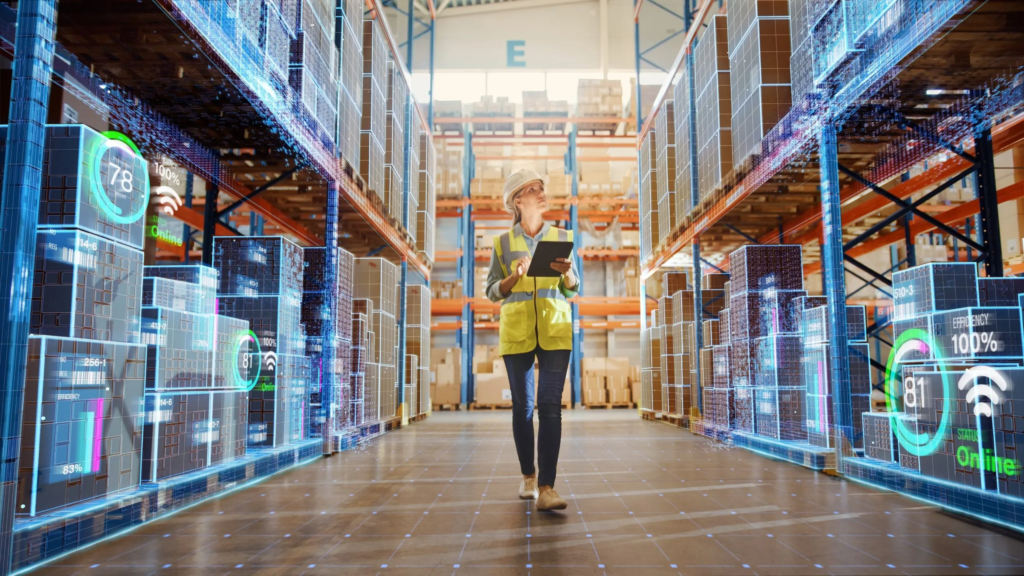In today’s fast-paced global market, businesses are constantly seeking ways to gain a competitive edge. One increasingly vital aspect of this quest is item-level inventory traceability. Let’s delve into what this means and why it’s becoming a game-changer for companies worldwide.
Traditional Methods Fall Short
Traditional inventory tracking methods have long been the norm, focusing on groups of items rather than individual units. While this approach served its purpose in the past, the evolving landscape demands more precision and efficiency.
The Rise of Real-Time Item-Level Visibility
Enter real-time item-level visibility (RTILV), a revolutionary approach that enables companies to track each item throughout the entire supply chain in real-time. Unlike traditional methods, which offer only a broad overview, RTILV provides granular insights into the location and status of individual items.
Benefits Galore
The adoption of RTILV brings a myriad of benefits, propelling businesses ahead in the competitive race:
- Improved Decision-Making: With access to real-time data on individual items, companies can make informed decisions swiftly, leading to more agile and effective operations.
- Optimized Inventory Levels: RTILV empowers businesses to maintain optimal inventory levels by accurately tracking stock movements and demand fluctuations, reducing the risk of overstocking or stockouts.
- Reduced Waste: By pinpointing the exact location and condition of items, RTILV helps minimize waste by preventing spoilage, expiration, or loss.
- More Accurate Demand Forecasts: Armed with precise data on item movements and consumer trends, companies can generate more accurate demand forecasts, minimizing forecasting errors and improving overall efficiency.
- Better Production Planning: RTILV enables proactive production planning by providing insights into raw material availability, production progress, and demand patterns, ensuring smoother operations and timely deliveries.
Harnessing Granular Data
The granular data obtained through RTILV offers invaluable insights into various aspects of the supply chain:
- Location-Specific Demands: By analyzing item movements across different locations, businesses can identify specific regional demands and tailor their strategies accordingly, ensuring targeted marketing and inventory management.
- Seasonal Trends: RTILV facilitates the detection of seasonal fluctuations in demand, allowing companies to adjust their production schedules, marketing campaigns, and inventory levels to capitalize on seasonal peaks and mitigate slowdowns.
Enhancing Customer Experience
Ultimately, the adoption of RTILV translates into a better customer experience:
- On-Demand Delivery: With real-time visibility into item locations and availability, businesses can fulfill customer orders promptly, ensuring timely deliveries and meeting customer expectations for convenience and reliability.
Conclusion
In conclusion, item-level inventory traceability is no longer just a buzzword; it’s a critical component for businesses striving to thrive in today’s competitive market. By embracing RTILV and harnessing the power of granular data, companies can unlock new levels of efficiency, agility, and customer satisfaction, setting themselves apart as industry leaders in the global arena.
Item-level inventory traceability refers to the ability to track individual items throughout the supply chain in real-time, providing detailed insights into their location and status.
Item-level inventory traceability is crucial for businesses to remain competitive in the global market by enabling improved decision-making, optimized inventory levels, reduced waste, more accurate demand forecasts, and better production planning.
RTILV allows companies to track each item individually in real-time, whereas traditional methods focus on groups of items, offering only a broad overview of inventory movements.
The benefits include improved decision-making, optimized inventory levels, reduced waste, more accurate demand forecasts, better production planning, enhanced customer experience, and insights into location-specific demands and seasonal trends.
By providing granular insights into the location and condition of individual items, item-level inventory traceability helps prevent spoilage, expiration, or loss, thereby minimizing waste.
Yes, item-level inventory traceability enables businesses to analyze item movements and consumer trends, helping them gain a deeper understanding of customer demands and preferences.
By offering insights into raw material availability, production progress, and demand patterns, item-level inventory traceability facilitates proactive production planning, ensuring smoother operations and timely deliveries.
Item-level inventory traceability enables businesses to fulfill customer orders promptly by providing real-time visibility into item locations and availability, thereby ensuring timely deliveries and meeting customer expectations.
By analyzing item movements and demand patterns, businesses can identify seasonal fluctuations in demand and adjust their production schedules, marketing campaigns, and inventory levels accordingly to capitalize on seasonal peaks and mitigate slowdowns.
Item-level inventory traceability offers benefits to businesses of all sizes, empowering them with valuable insights into their supply chain operations, enhancing efficiency, agility, and competitiveness in the market.

